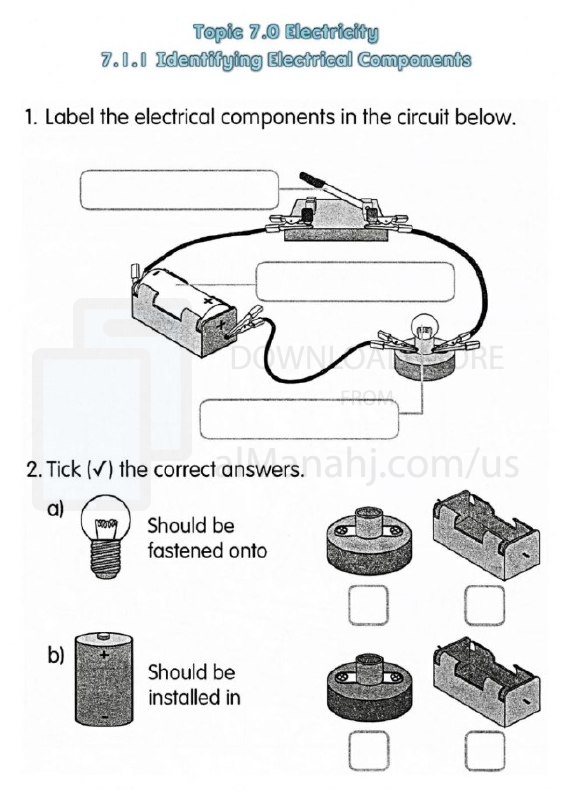File info: A Worksheet about Functions of Electrical Components is an educational resource designed to help students explore and understand the functions and roles of various electrical components commonly found in circuits and electronic devices. The worksheet provides activities and questions that engage students in learning about the purpose and operation of these components. Here's a description of what a Worksheet about Functions of Electrical Components might include:
1. Introduction: The worksheet begins with an introduction that explains the importance of electrical components in circuits and electronic devices. It may provide a brief overview of the types of components that will be covered and their significance in enabling the flow of electricity and performing specific functions.
2. Component Definitions: The worksheet includes definitions and explanations of key electrical components. It may cover components such as resistors, capacitors, diodes, transistors, switches, LEDs, and integrated circuits. Each component is described in terms of its purpose, structure, and the role it plays in a circuit or device.
3. Identification Activities: The worksheet may include activities where students are given diagrams or images of circuits or electronic devices and are asked to identify the various components present. This helps students develop visual recognition of the components and their placement within a circuit.
4. Functions and Roles: The worksheet explores the functions and roles of electrical components in more detail. It may provide specific scenarios or circuit diagrams and ask students to identify the component responsible for a particular function, such as controlling current flow, regulating voltage, storing charge, amplifying signals, or providing on/off control.
5. Matching or Fill-in-the-Blank: The worksheet may include matching exercises or fill-in-the-blank questions that require students to correctly associate the function with the corresponding electrical component. Students may be given a list of functions and a list of components and asked to match them correctly.
6. Circuit Analysis: The worksheet may include circuit analysis exercises where students are given circuit diagrams and asked to analyze the functions of each component in the circuit. They may be prompted to explain how the components work together to achieve a specific outcome or perform a particular task.
7. Real-World Applications: The worksheet may provide examples of everyday devices or systems and ask students to identify the electrical components involved and explain their functions within those systems. This helps students understand the practical applications of electrical components in various contexts.
8. Critical Thinking and Problem-Solving: The worksheet may include critical thinking questions or problem-solving activities that require students to apply their knowledge of electrical components to solve circuit-related problems. Students may be asked to design a circuit to meet specific requirements or troubleshoot a malfunctioning circuit by identifying faulty components.
9. Vocabulary and Concept Review: The worksheet provides opportunities for students to reinforce their understanding of the vocabulary and concepts related to electrical components. It may include activities such as matching definitions to terms, completing sentences with the appropriate words, or creating their own explanations for specific concepts.
The purpose of a Worksheet about Functions of Electrical Components is to engage students in exploring the functions and roles of electrical components in circuits and electronic devices. The worksheet helps students develop an understanding of how different components contribute to the overall operation of a circuit and perform specific functions. It encourages students to make connections between theoretical knowledge and real-world applications, fostering critical thinking and problem-solving skills. |
